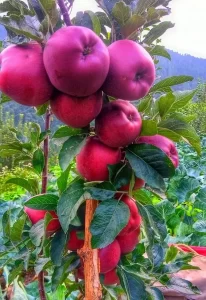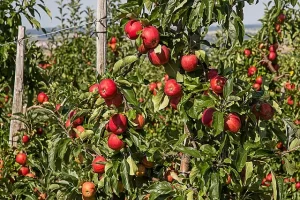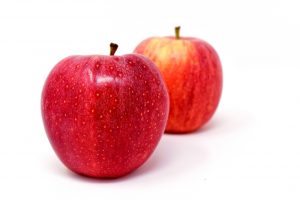A high-density apple orchard is a new approach for the cultivation of apple fruit.
This is a new way of farming, in which the apple trees are planted or grown in a very dense and systematic manner.
Various varieties being planted are Jeromine, Red Velox, Red Cap Valtod, Scarlet Spur-II, Super Chief, Gale Gala, Redlum Gala, Pink Lady, and Auvi Fuji.
The apple trees are planted in a row with a distance of 2 – 3 meters and then the second row in the same way with a 3 – 5 meter distance between the rows.
What is high density plantation
The high-density plantation is a new way of planting the maximum possible number of plants per unit area of land to get maximum crop yield and profit per unit.
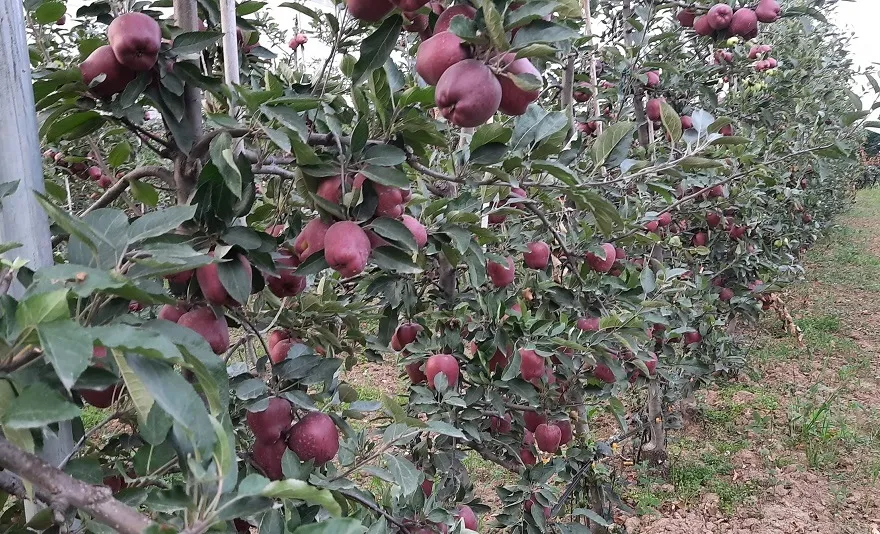
The traditional systems of planting have a long juvenile period, are labor-intensive and low-yielding with poor quality fruits.
Must Read:: Best High-Density Apple Varieties
Whereas high density is easily manageable, has higher yield potential, with better quality fruits and higher returns/unit area.
But it cannot be adopted in steep, unfertile, shallow & drought-prone places.
These orchards are capable of producing early and sustained yields of quality fruit.
High-density orchards will provide for an efficient operation with optimum utilization of the available labor force.
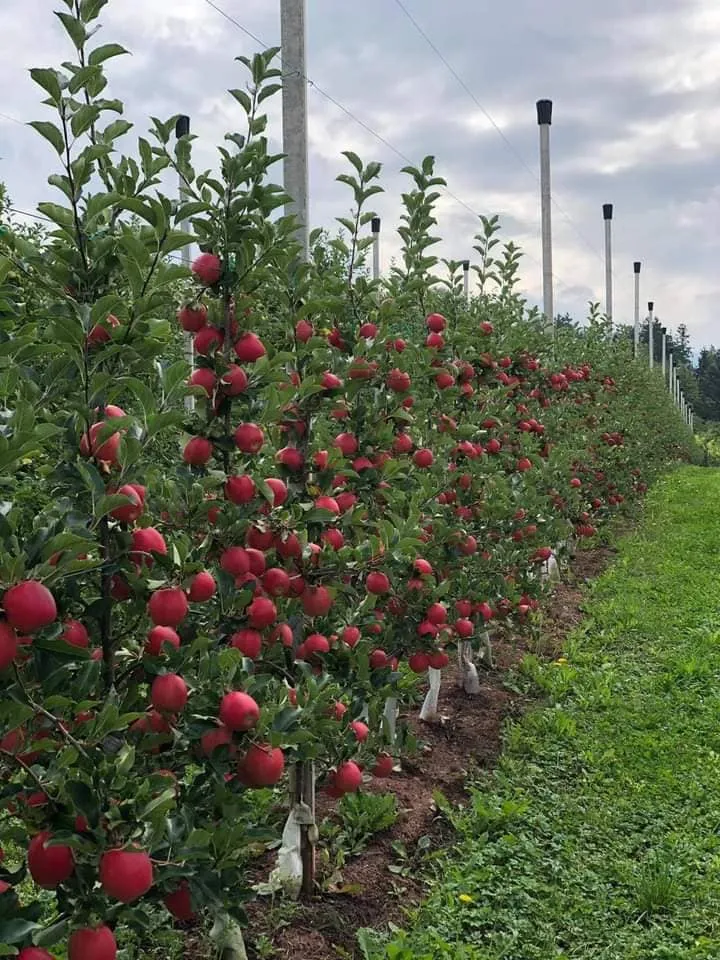
Besides, the advantage of high-density plantings is that the orchard space can be rapidly filled, fruited, and then maintained by utilizing the early bearing and size controlling characteristics of certain stock combinations.
Hence, for obtaining high yield and good quality produce, several variables need to be taken into consideration.
Tree density is an essential factor that determines the yield of an orchard. Therefore tree densities should be considered on the basis of rootstock and the variety used.
High density Apple Orchards In Kashmir
The apple growers in Kashmir also have an interest in setting up high-density orchards with both government and non-government organizations.
High-density apple orchards have a good potential of producing an early and good amount of quality apples with less labor and expenditure.
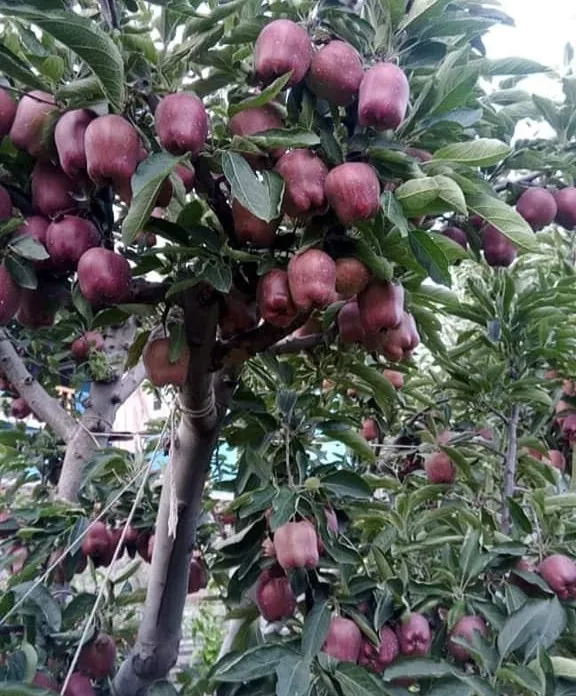
The farmers have started planting the high-density apple varieties in their free land, also some are cutting their traditional plants such as Delicious, Kullu, etc. to plant the new varieties of apples.
Requirements for high density apple
Soil
The high-density plantation is best suitable on flat and fertile lands with an available irrigation system.
Apples grow best on well-drained, loam soils having a depth of 45 cm and a pH range of pH 5.5-6.5. Soils with heavy clay or compact subsoil are to be avoided.
Canopy Management
The modern methods of canopy management viz., vertical axis, slender spindle, and tall spindle, etc. are helpful in the best utilization of land and resources and ease in orchard management, plant protection as well as harvesting.
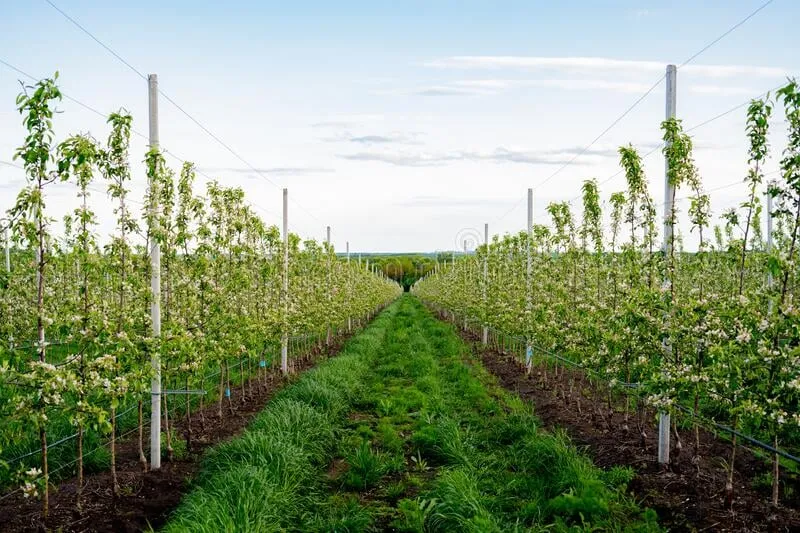
Training and pruning are two important horticultural practices of canopy architecture.
The training aims at more penetration of sunlight, support to main branches for desired tree architecture to increase the planting density, and finally increasing production.
Training systems like a tall spindle, vertical axes, slender spindle, head, and spread are recommended for high-density apple orchards.
Under these, branches are trained to horizontal positions/ below horizontal, using cloth pins on 8-10 cm shoots and tying of branches during summer.
Drip irrigation
It is further recommended to install trickle (drip) irrigation soon after planting with high-density orchards that use feathered trees to prevent water stress and maximize tree growth.
Climate
Temperature is one of the most important factors affecting apple cultivation. Therefore, such areas where the temperature in winters falls below 70C for a sufficient duration are suited for apple cultivation.
Spring frost damages the blossoms of Delicious apples. So areas experiencing spring frosts should be avoided for apple cultivation.
Apple can be grown in a wide range of rainfall from evenly spread rains of 25-37 cm per year to heavy seasonal rains up to 125-175 cm during monsoons.
Propagation and Root Stocks
Seedling rootstocks
The apple plantations are raised on seedling rootstocks. The seeds of commercial varieties from fruit juice canning units are used by nurserymen for raising rootstocks.
Apple seeds need stratification in moist sand at 40-70C for 60-90 days.
The water soaked seeds are placed between 2 and 3 cm thick layers of moist sand in wooden boxes or polythene bags during December.
The stratification can be accomplished in the lower chamber of the refrigerator.
The stratification requirement is also met with, in areas having very cool winters, by direct sowing of seeds in nursery beds in November-December.
Clonal rootstocks
Clonal rootstocks of apples are propagated through mound layering. The rooted layers of the clone are planted in stool beds during winter at a distance of 30 cm in a row and 60 cm apart rows.
The 3-4 years old layers give rise to numerous suckers during spring. The suckers are ringed or notched near the base during the rainy season and covered with soil to encourage rooting.
Tree Quality
In Several studies, it was found that the greater the number of lateral branches or feathers the greater the yield in the second and third years.
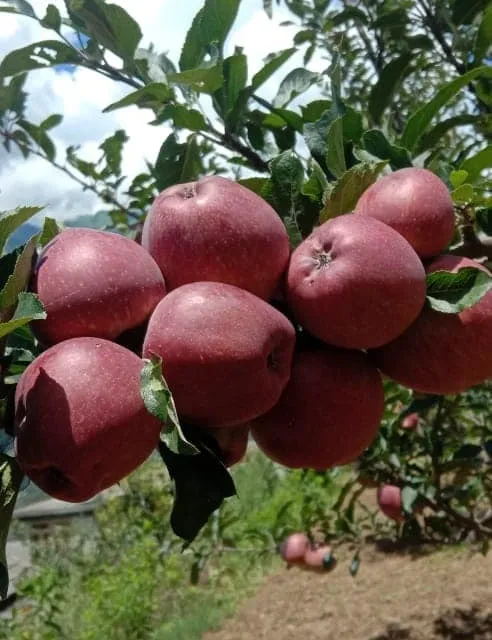
Modern high-density orchards can have significant 2nd and 3rd year yields if highly-feathered trees are planted and if trees grow well the first year.
If growers use whips or small caliper trees these do not produce significant quantities of fruit until year 4 or 5.
Fruit growers should insist that nurseries supply trees with feathers that are high enough to tie down after planting.
Planting Density
Planting density is an important factor that determines the yield outcome of an orchard for the first 5 years.
The suggestion to growers is that the space between the trees should be 6-8 feet and row spacing should be 8 – 12 feet accordingly, in an 800 – 1400 / acre trees range.
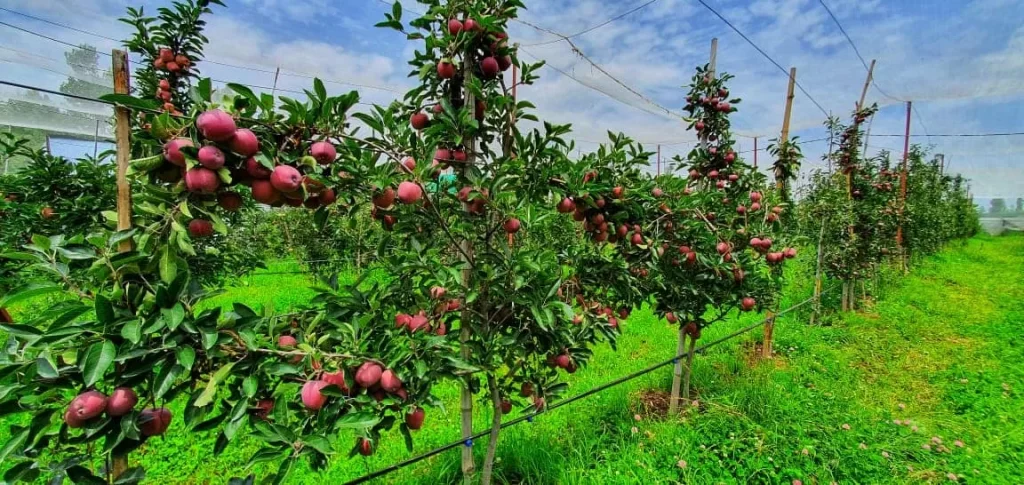
The decision of how close to plant these trees should be made with consideration of the type of variety, soil fertility rate, variety quality, and yield.
For weak and moderate growing cultivars such as Honey crisp, Delicious, Brae burn, Empire, Jonamac, Macoun, Idared, Gala, NY674, Golden Delicious, etc. we suggest an in-row spacing of 3′.
For vigorous varieties such as McIntosh, Spartan, Fuji, Jon gold, Mutsu, etc., and tip bearing varieties such as Cortland, Rome, Granny Smith, and Ginger gold, we suggest an in-row spacing of 4′.
Training and Pruning
Since these plants are small in size and have a good quantity of yield so we need to train these plants to make a strong framework.
- Capable of supporting heavy yield.
- Regulate annual succession of crops.
- Expose maximum leaf surface to the sun.
- Direct the growth of the trees.
- Operations like spraying and harvesting become economical.
- Protect the tree from sun burn.
- Promote early production.
- The training methods differ for standard and dwarf trees.
See also: Pruning In High-Density Apple Orchards
Training of standard trees
Trees are mostly trained to modify central leaders. The central leader is allowed to grow to a height of 2-3 m when its growth is restricted.
A modified central leader combines the best qualities of the central leader and open center systems.
A leader develops on young trees until it reaches the height of about 3 m, then its growth is restricted.
One-year-old apple tree should be pruned to 45-60 cm above the ground immediately after being planted.
Branch Angle Manipulation
An important method of shifting the balance between vegetative growth and cropping in young trees is tying down of the scaffold branches below horizontal to induce cropping.
In the vertical position, a shoot grows more vigorously than in a horizontal or pendant position and tends to remain non-fruitful.
A horizontal or pendant limb grows less vigorously and then crop heavily the next year and bend under the weight of the fruit.
The fruits are also strong competitors for resources and limit the growth of the branch even more.
Irrigation
A newly planted tree cannot support or provide the necessary water amount required by the whole tree despite having enough soil moisture available.
Also Large, highly-feathered trees produce more leaf shortly which creates a high demand of water stress shortly after planting despite adequate soil moisture levels.
This process is required till the root system can re-grow sufficiently to support the tree and provide the necessary water amount.
Frequent and early trickle irrigation can help these trees produce good growth in the first year.
It is recommended that growers install trickle irrigation soon after planting with high density orchards that use feathered trees to prevent water stress and maximize first-year tree growth.
Weed Control and Fumigation
Fumigation ( Disinfect )
Fumigation is a process of disinfecting by the applications of some gases and smoke.
In many cases, the tree growth of new orchards planted on old orchard land can be improved significantly with soil fumigation.
Even with fumigation, almost all old orchard sites produce less tree growth than virgin sites.
Thus, tree planting density should be increased on old orchard sites compared to virgin sites by 20-30%.
Weed control
Weed competition can drastically reduce tree growth during the first few years and can cause a failure of the orchard to fill its allotted space which always results in diminished yield and profitability.
Good weed control during the first 3-4 months of a growing season is the most critical time period of the season.
Thus we recommend that growers provide excellent weed control for the first 4 months of the season for the development years of the orchard.
Crop load Management
In high-density orchards crops, load management is an effective way to reduce to burden on trees in the first 4 years so that there will be a strong framework of shoots and the overall strength of the tree.
There must be a balance between the vegetative growth of the tree and the yield according to the strength of the tree.
Also Read: Best Kashmiri Apples


